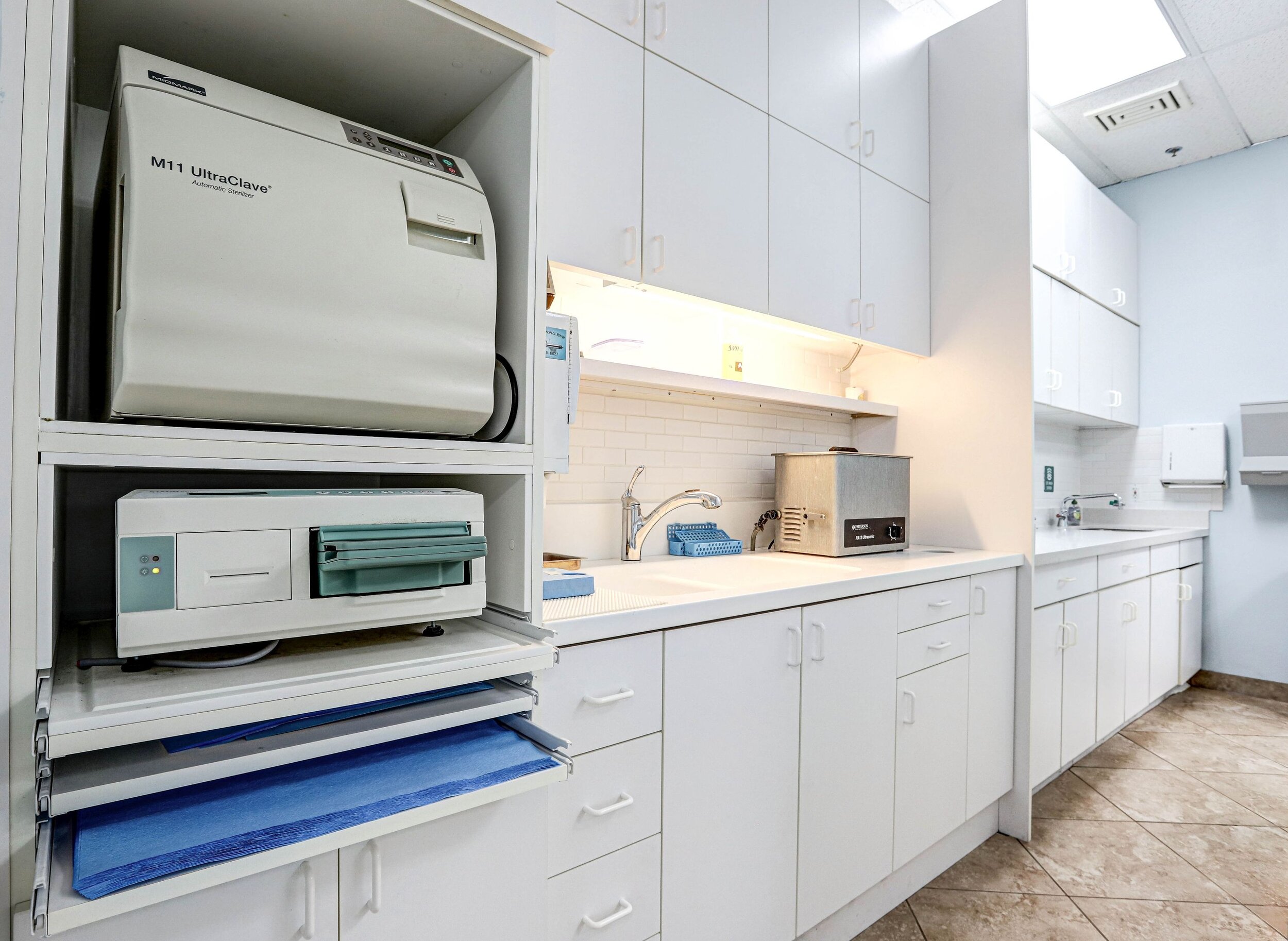
Periodontal Maintenance in Glendale, AZ
Among the causes for periodontal (gum) disease are genetic susceptibility, smoking, and other illnesses like diabetes. Periodontal maintenance involves removing plaque and tartar from above and below the gum line. Most gum diseases are preventable with proper oral hygiene. However, what can start out as gingivitis (inflamed or bleeding gums) can quickly turn into periodontitis. In such cases, gums pull away from the tooth to create “pockets,” thereby exposing a dental root to infection. It can also lead to prolonged bad breath, loose teeth, painful chewing and other complications.
Periodontal Disease
Periodontal disease (also known as gum disease) is an infection of the tissue that keeps your teeth in place—caused by inadequate brushing and flossing practices that let plaque accumulate on the teeth and then solidifies. In later stages, periodontal disease causes sores, bleeding gums, painful chewing issues, and even tooth loss.
Our mouths are bacteria-ridden. This bacteria, in addition to mucus and other particles, frequently form a colorless, sticky plaque on our teeth. If we brush and floss, it can get rid of plaque, however; plaque that isn’t done away with can harden to form what’s known as tartar. Tartar cannot be brushed away, and only a professional cleaning can get rid of it.
Many risk factors can lead to gum disease. Smoking is the leading cause. Smoking can make any treatment for gum disease less likely to succeed. Additionally, there are other risk factors such as diabetes, medications that reduce the flow of saliva, hormone changes in women, and illnesses such as AIDS.
Prevention with Periodontal Maintenance
Regular checkups are critical to periodontal prevention and maintenance. During an examination, your gums are checked for periodontal disease. The dentist will look at several things, such as the color and firmness of the gums. Your dentist will use a tiny instrument called a periodontal probe. It is used to measure the space between the teeth and gums. This allows the dentist to know if there are periodontal pockets.
In all except the unusual cases, periodontal disease can be kept at bay by brushing and flossing regularly. You should also avoid smoking or tobacco use and eat a balanced diet. There are situations where brushing and flossing might not be enough, particularly around the gumline. Plaque left behind will harden into tartar, which can only be removed by a professional.
What’s the difference between Routine Cleaning & Periodontal Maintenance?
Regular cleanings are recommended for people who have no bone loss, periodontal disease, or infections around their teeth. There shouldn’t be any bleeding, receding areas, or gaps. This means that your mouth should be completely healthy without bone of gum issues. Regular cleanings are prophylactic because they get rid of soft plaque, stains, and tartar from teeth above the gum line and just below.
Frequent cleanings are considered to be 2 to 3 times each year. Depending upon how fast stains, plaque, and tartar form, most insurances will consider this a preventative measure, because they help put a stop to periodontal disease.
Having periodontal disease that results in bone loss, gum pockets larger than 4 millimeters, exposed root surfaces, bleeding gums, or if you have gone through periodontal surgery before, then a standard cleaning is inappropriate. In this situation, periodontal maintenance is required to sustain gum and bone health. This procedure involves removing plaque and tartar, all the way down each tooth to the root. Irregular areas of the roots can be smoothed if necessary, pockets can be observed, and inflamed areas can be irrigated with antibacterial medicine.